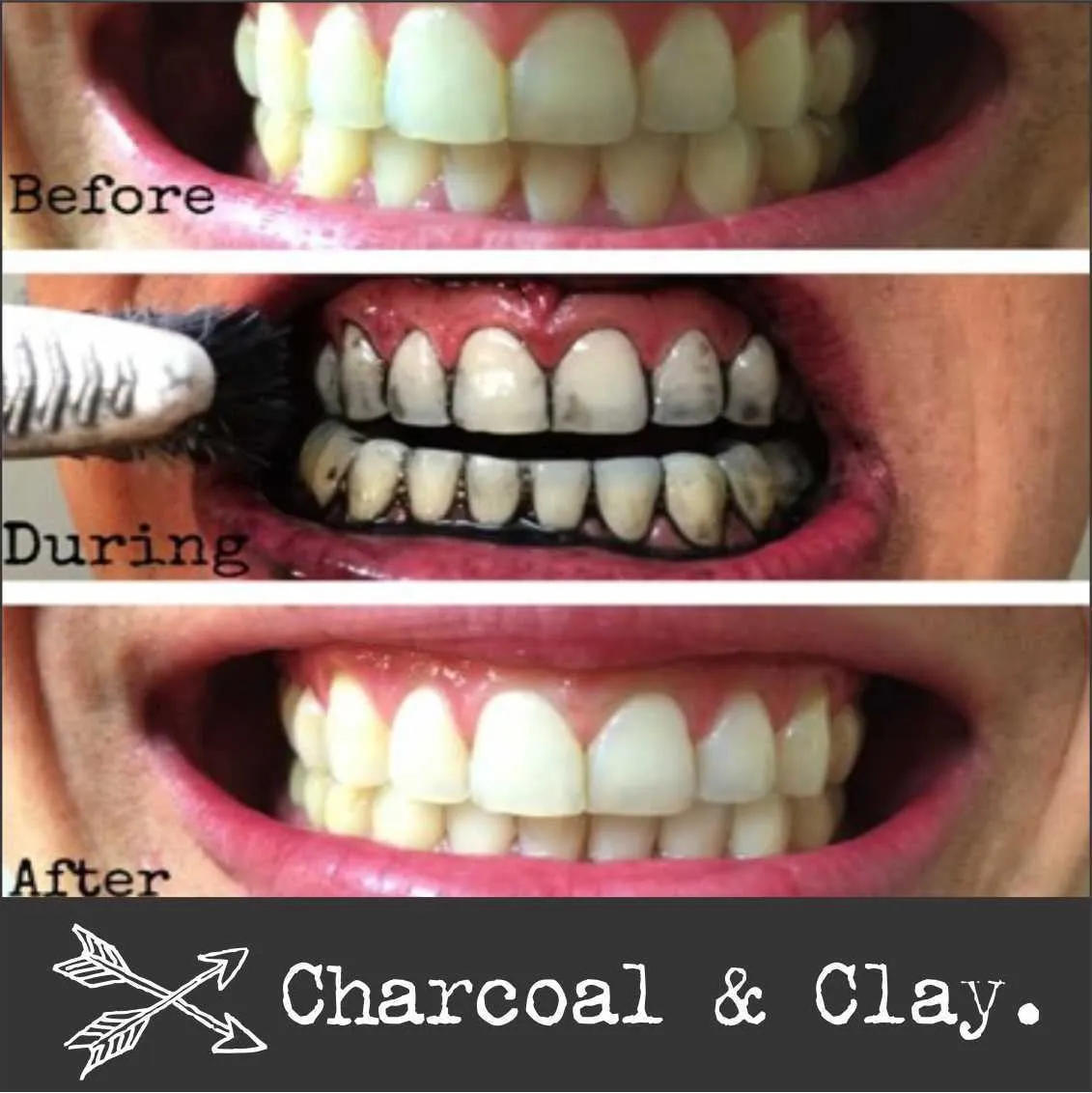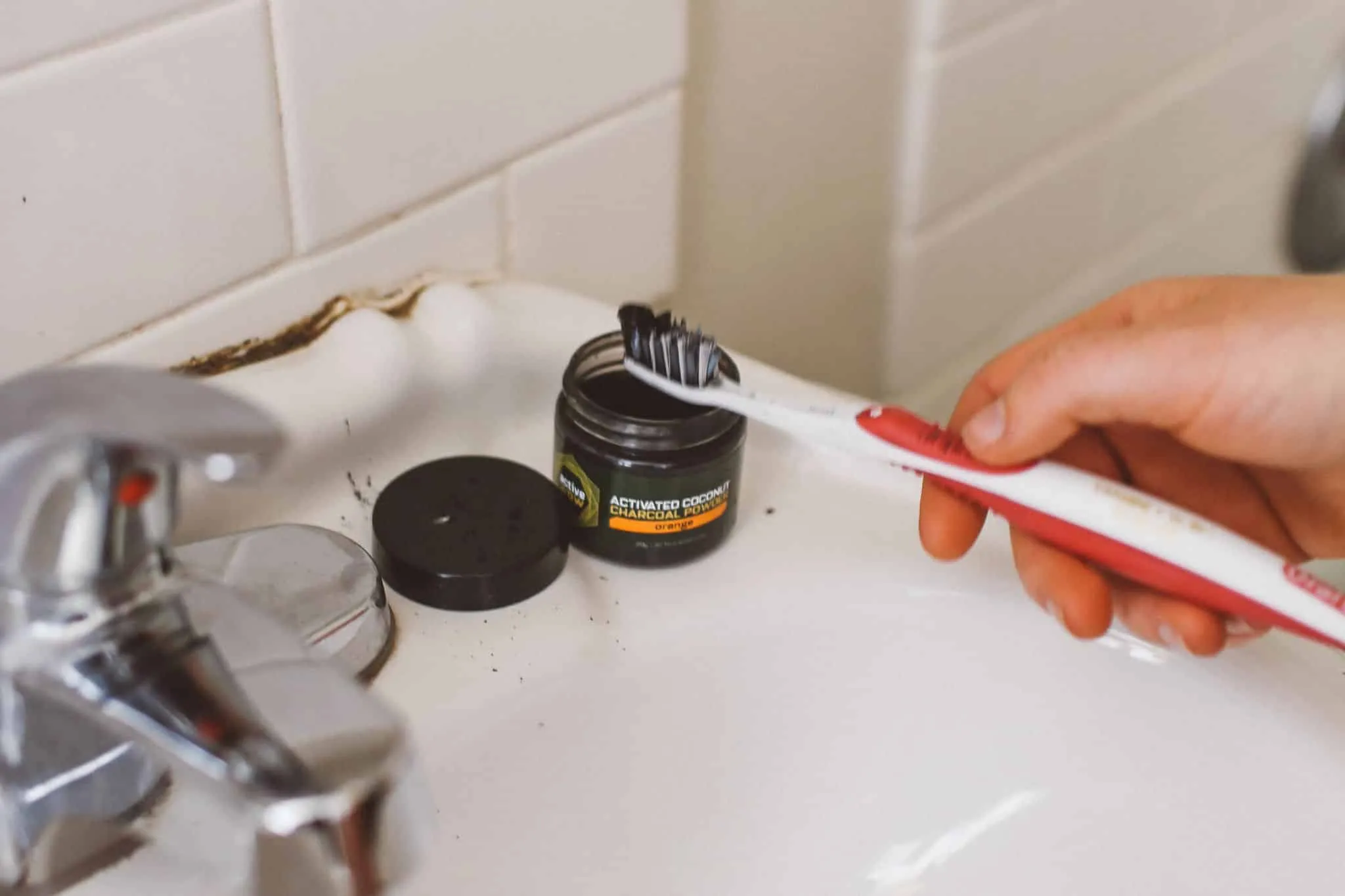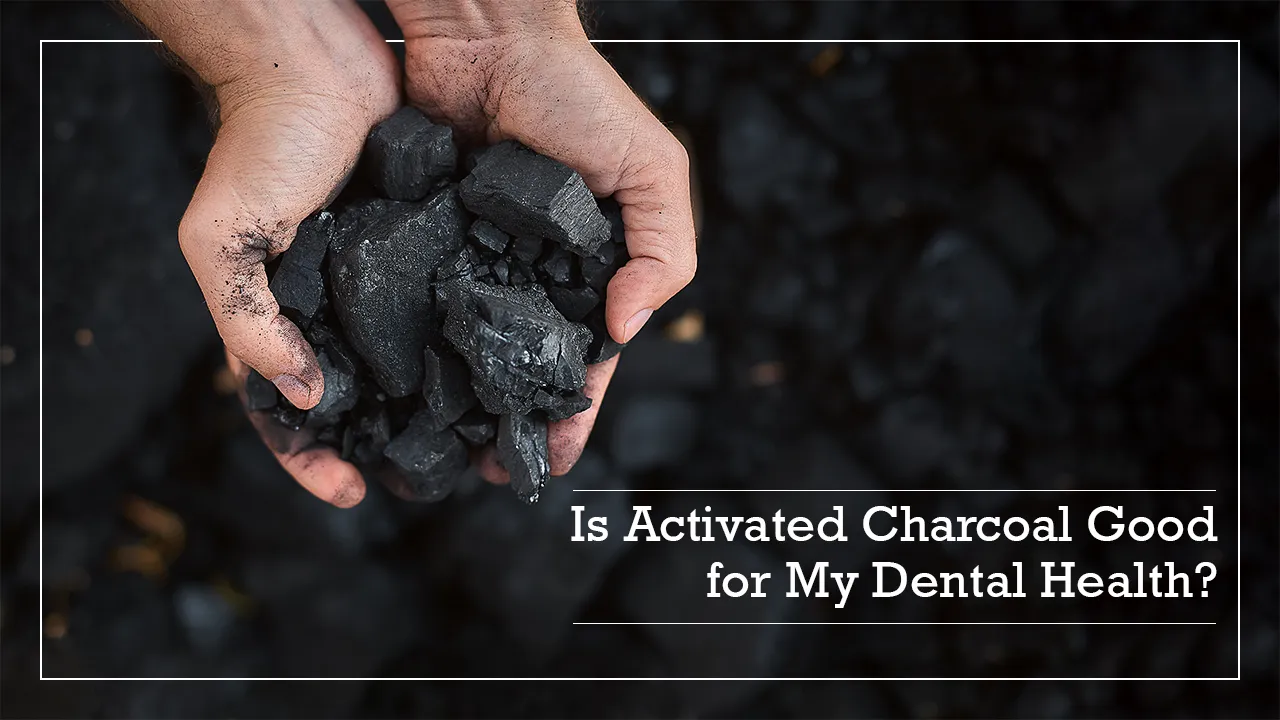What is Activated Charcoal Teeth Whitening
Activated charcoal teeth whitening has gained significant popularity as a natural method for brightening smiles. It involves using activated charcoal, a fine black powder, to remove stains and impurities from teeth. This substance is created by heating carbon-rich materials, like coconut shells or wood, to high temperatures and then activating them with steam or other agents. This process increases the charcoal’s porosity, allowing it to trap and absorb substances. The primary aim of using activated charcoal is to remove surface stains, such as those caused by coffee, tea, wine, and tobacco, resulting in a whiter appearance of teeth. However, it is essential to understand both the benefits and potential drawbacks before incorporating activated charcoal into your oral hygiene routine. Many people turn to this method seeking a cost-effective and natural alternative to professional teeth whitening treatments.
How Activated Charcoal Works to Whiten Teeth
Activated charcoal’s effectiveness in teeth whitening is primarily attributed to its absorptive properties. The porous nature of activated charcoal allows it to bind to stains and impurities on the tooth surface. When you brush with activated charcoal, the abrasive particles help to dislodge and remove these stains. As the charcoal particles come into contact with the teeth, they attach to the stain molecules, lifting them away from the enamel. This process does not chemically alter the tooth structure; instead, it physically removes the discolored substances. The overall effect is a cleaner, brighter appearance of the teeth. It’s important to note that activated charcoal is most effective on extrinsic stains, meaning those on the surface of the teeth. It does not inherently change the color of the tooth enamel itself, which is the underlying natural shade.
The Science Behind Activated Charcoal

The science behind activated charcoal’s functionality is rooted in its unique structure. The activation process creates a vast surface area within the charcoal, making it highly absorbent. This large surface area is responsible for the charcoal’s ability to capture and hold onto various substances. In the context of teeth whitening, this means that the charcoal can attract and bind to stain molecules. However, the scientific evidence supporting the efficacy of activated charcoal for teeth whitening is limited and often based on anecdotal reports. While some studies suggest that activated charcoal can remove surface stains, there is a lack of robust clinical trials proving its long-term effectiveness or safety for teeth whitening. Therefore, while the science explains the absorptive capabilities, further research is needed to fully understand its impact on dental health.
Benefits of Using Activated Charcoal for Teeth Whitening
One of the primary benefits of using activated charcoal is its ability to remove surface stains, leading to a brighter smile. It can be a relatively inexpensive alternative to professional teeth whitening treatments and is readily available in many health stores and online. Many users appreciate that it is a natural product, free from harsh chemicals that are often found in commercial teeth whitening products. Many people find it easy to incorporate into their daily oral hygiene routine. By removing surface stains, activated charcoal can contribute to an improved appearance of the teeth, boosting self-confidence. Furthermore, some users report a feeling of fresher breath after using activated charcoal, although this effect is often temporary. It is crucial to consider both the pros and cons to make an informed decision about including this product in your oral care regimen.
Removing Surface Stains
The primary function of activated charcoal in teeth whitening is to remove surface stains. These stains are typically caused by dietary choices, such as coffee, tea, red wine, and certain foods, as well as by smoking. When you brush with activated charcoal, the slightly abrasive particles help to scrub away these stains, restoring the natural whiteness of the teeth. By eliminating these surface stains, the teeth appear brighter and cleaner. The key to this effect is the charcoal’s ability to bind to the stain molecules, lifting them away from the enamel. This process, however, only addresses the exterior stains and does not change the intrinsic color of the teeth. Regular use of activated charcoal can assist in preventing stain buildup, especially when combined with good oral hygiene practices like brushing and flossing. The effectiveness of activated charcoal varies depending on the type and severity of the stains, as well as individual enamel properties.
Potential Risks and Side Effects

While activated charcoal may offer some cosmetic benefits, there are potential risks and side effects to consider. One of the primary concerns is the abrasive nature of the charcoal, which can potentially wear down tooth enamel over time. Enamel erosion can lead to increased tooth sensitivity, as well as making the teeth more susceptible to cavities and other dental problems. Some users may also experience gum irritation or sensitivity. Another potential issue is that activated charcoal may not be suitable for everyone, especially those with existing dental conditions or sensitive teeth. The long-term effects of using activated charcoal for teeth whitening are still being studied, and there is a lack of extensive research on its safety. It is essential to consult with a dentist before using activated charcoal to ensure it is appropriate for your specific oral health needs.
Enamel Erosion Concerns
One of the significant concerns associated with using activated charcoal for teeth whitening is enamel erosion. Enamel is the hard, protective outer layer of the teeth, and it is crucial for maintaining oral health. Activated charcoal can be abrasive, and when used improperly or too frequently, it can gradually wear down the enamel. The loss of enamel can lead to several problems. It increases tooth sensitivity, making teeth more susceptible to temperature changes and sugary foods. It can also make teeth more vulnerable to cavities, as the enamel protects the underlying dentin from decay. Furthermore, enamel erosion is irreversible; once the enamel is gone, it cannot be naturally replaced. Therefore, it is essential to use activated charcoal with caution, follow the instructions carefully, and be aware of any signs of increased sensitivity or enamel wear. Regular dental check-ups are crucial to monitor the health of your enamel.
Proper Application Techniques
Using activated charcoal effectively and safely requires proper application techniques. Begin by lightly moistening your toothbrush. Dip the bristles into the activated charcoal powder, ensuring that the brush is evenly coated. Gently brush your teeth for about two minutes, using circular motions. Avoid applying excessive pressure, as this can increase the risk of enamel abrasion. After brushing, rinse your mouth thoroughly with water, ensuring that all charcoal particles are removed. Some users may find it helpful to follow up with their regular toothpaste to remove any remaining charcoal residue. Repeat this process no more than once or twice a week. It is very important to be careful of the mess; activated charcoal can stain clothing and surfaces. It is recommended to brush over the sink and to clean up any spills promptly. Always consult with your dentist regarding the best techniques and frequency for your specific situation.
Making the Charcoal Paste

If you prefer, you can create a paste using activated charcoal instead of just dipping your toothbrush in the powder. To make the paste, mix a small amount of activated charcoal powder with a tiny bit of water. Start with a little water and add more until you achieve a smooth, creamy consistency. You want the paste to be thick enough to adhere to your toothbrush but not so thick that it is difficult to spread. Some people add a drop of essential oil, like peppermint or clove, for flavor and potential antibacterial benefits, though this is optional. Applying the paste to your toothbrush is similar to applying the powder; brush gently for about two minutes using circular motions, and rinse thoroughly. Make sure the paste is made fresh each time to maintain its effectiveness. Storing the paste is generally not recommended, as it can dry out and lose its desired consistency. Always make sure that you use food-grade activated charcoal to make a paste that is safe for your oral health.
Brushing with Activated Charcoal
Brushing with activated charcoal is relatively simple, but it’s important to follow some key steps to ensure effectiveness and minimize potential harm. First, make sure your toothbrush is slightly wet before applying the activated charcoal. Dip the brush into the powder or the paste. Start by gently brushing all surfaces of your teeth using small, circular motions. Avoid scrubbing too vigorously, as this can increase the risk of enamel wear. Brush for about two minutes. After brushing, rinse your mouth thoroughly with water, repeatedly, to remove all traces of the charcoal. It’s advisable to use your regular toothpaste afterward to make sure your teeth are completely clean. Be mindful of the mess, as activated charcoal can stain surfaces. Use a dark towel to protect your clothes, and clean the sink immediately after rinsing. Remember to consult with your dentist to make sure this method is right for you and to determine the appropriate frequency.
Reddit User Experiences and Reviews
Reddit is a valuable platform for gathering insights from users who have tried activated charcoal teeth whitening. Many users share their experiences, both positive and negative, on forums like r/TeethWhitening or r/Dentistry. Some users report noticeable whitening effects and are pleased with the results, praising the affordability and natural approach. They may share before-and-after photos or describe their experiences with different products. However, other users express concerns about the effectiveness, the potential for enamel erosion, and the messiness of the process. Common feedback includes comments on sensitivity after use or the gritty texture of the charcoal. It’s important to note that Reddit reviews represent individual experiences, and results can vary. Reading these reviews can provide you with a balanced perspective and help you make an informed decision. Remember to assess the information critically, considering the potential for bias and individual differences in oral health.
Real-Life Success Stories

While individual experiences vary, some users have reported positive outcomes with activated charcoal teeth whitening. These real-life success stories typically involve individuals who have seen a noticeable improvement in the brightness of their teeth. Many success stories highlight the removal of surface stains caused by coffee, tea, or smoking. Some users share before-and-after photos to demonstrate the visible difference. Such stories often emphasize the natural and cost-effective nature of the treatment as a significant benefit. It is important to note that success can be affected by several factors. The individual’s oral hygiene habits, the type and severity of the stains, and the enamel condition all play a role. Also, many people find that consistent, proper application is crucial for achieving the best results. It’s crucial to view these stories as anecdotal and to consult with a dental professional for personalized advice.
Common Issues and Solutions
Despite the potential benefits, several common issues can arise when using activated charcoal for teeth whitening. One frequent problem is the messiness, as charcoal powder can stain surfaces, clothes, and the sink. Solutions include brushing carefully over the sink, using a dark towel, and cleaning surfaces immediately after use. Another common issue is tooth sensitivity. This may be caused by enamel wear. If you experience increased sensitivity, reduce the frequency of use or consult your dentist. Some users also find the gritty texture of the charcoal unpleasant. For these individuals, creating a paste with water might improve the experience. Lack of noticeable results is another concern. In cases where the stains are deep-seated, or the teeth are naturally dark, activated charcoal may not be sufficient. Combining the use of activated charcoal with a regular brushing routine, flossing, and a balanced diet can often help. If problems persist, it’s best to consult with a dental professional for advice.
Alternative Teeth Whitening Methods
If activated charcoal doesn’t meet your needs or you are looking for alternative teeth whitening options, there are several methods to consider. Over-the-counter whitening products, such as whitening toothpaste, strips, and gels, are readily available. These products typically use hydrogen peroxide or carbamide peroxide as the active whitening agent. Professional teeth whitening treatments offered by dentists provide more potent solutions. These treatments often use higher concentrations of peroxide and can be done in-office or through custom-fitted trays. Another option is using natural remedies like oil pulling with coconut oil. While this method mainly focuses on oral hygiene and may not provide dramatic whitening results, it contributes to overall oral health. It is essential to choose a method that aligns with your oral health needs and consult a dentist to get advice on the most suitable approach.
Professional Teeth Whitening Options

Professional teeth whitening offers effective and safe solutions for achieving a brighter smile. Dentists can provide in-office whitening treatments, which are typically faster and more potent than at-home methods. These treatments use high concentrations of hydrogen peroxide under professional supervision. Another option is custom-fitted whitening trays. Your dentist will create custom trays to fit your teeth precisely, and you will use them at home with a dentist-prescribed whitening gel. This method allows for more controlled application and can produce significant results over a few weeks. Dentists can also assess the condition of your teeth and gums, ensuring that whitening treatments are appropriate for your specific situation. Professional whitening is particularly beneficial for those with stubborn stains or those seeking dramatic results. Before pursuing professional whitening, it is essential to have a thorough dental examination to rule out any underlying issues and to discuss your oral health goals with your dentist.
Maintaining Results and Oral Health
Maintaining the results of teeth whitening, whether using activated charcoal or professional treatments, requires consistent oral hygiene practices. Regular brushing and flossing are essential for removing plaque and preventing new stains. It’s recommended to brush at least twice a day with fluoride toothpaste and floss daily. Consider using an oral irrigator to help remove food particles and bacteria from hard-to-reach areas. A balanced diet also contributes to maintaining a bright smile. Limit the consumption of staining foods and drinks, such as coffee, tea, red wine, and sugary snacks. After consuming these items, it’s a good idea to rinse your mouth with water. Regular dental check-ups and professional cleanings are crucial for detecting and addressing potential issues early. Your dentist can provide tailored advice to support optimal oral health and help you preserve your bright smile for a long time.
Tips for Long-Term Whitening
Achieving and maintaining long-term teeth whitening results requires consistent effort and adherence to good oral hygiene practices. Minimize your intake of staining foods and drinks like coffee, tea, red wine, and dark-colored berries. If you consume these items, brush your teeth soon afterward or rinse your mouth with water to minimize staining. Avoid smoking and chewing tobacco, as these habits can significantly stain the teeth. Use a whitening toothpaste or mouthwash to help maintain brightness. Consider occasional touch-up treatments, such as at-home whitening trays or professional whitening sessions, to address any new stains. It is crucial to maintain a regular oral hygiene routine, including brushing twice a day and flossing daily. Be consistent with your dental check-ups and professional cleanings, as they are essential for preventing issues and maintaining your oral health.
Importance of Regular Dental Check-ups
Regular dental check-ups are essential for maintaining oral health and achieving optimal teeth whitening results. During these visits, your dentist can assess the overall condition of your teeth and gums, identify any underlying issues, such as cavities or gum disease, and provide appropriate treatment. Professional cleanings remove plaque and tartar that cannot be removed by regular brushing and flossing, helping to prevent staining and gum disease. Your dentist can also advise you on the most suitable teeth whitening options and ensure that they are safe for your specific needs. Furthermore, they can monitor the health of your enamel, particularly if you are using methods like activated charcoal, and provide guidance to minimize potential risks. Regular check-ups help catch problems early, which is usually easier and less expensive to treat. By seeing your dentist regularly, you protect not only your smile, but also your overall health.
